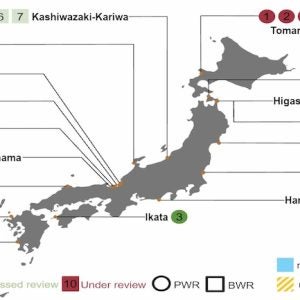
In order to be as profitable as possible when converting crude oil into petrol, diesel, paraffin and numerous other products, refineries need to optimise their processes and deal with highly fluctuating prices for raw materials, products and electricity in the best possible way. To adapt to the highly volatile electricity prices caused by renewable generation, new operating modes for existing boilers and power plant systems can make economic sense, especially those that take account of cheap PV generated electricity. This requires that the refinery operator is able to determine the optimum operating mode for the complex refinery system and to operate the individual plants accordingly.
A new IT solution for refinery optimisation, offered by the Aachen-based IT solution provider, KISTERS, together with the Austrian specialist in power plant simulation, ENEXSA, supports refinery operators in operating their power plants in the best possible way. In particular, the IT solution shows new, technically permissible operating modes, which, for example, ensure higher revenues via the short-term electricity markets, optimised use of residual materials while complying with emission regulations or greater integration of green hydrogen and thus a lower CO2 footprint.
The unique combination of digital twin and BelVis ResOpt optimisation software calculates company-specific improvement opportunities within a few minutes and provides the day-ahead schedules for boilers (taking into account fuel mix ratios), turbines and other power generation plants on a quarter-hourly basis.
“Mathematical optimisation systems have been supporting refineries for decades. What’s new is the ability to operate boilers and power plants based on electricity prices – without compromising actual production,” says Dr Olaf Syben, Head of Optimisation and Energy Analytics at KISTERS.
The challenge is to utilise the large number of gaseous and liquid (easily storable) residues in such a way as to create usable flexibility. To do this, the IT solution calculates the optimum solution for the efficient operation of the refinery power plant from all physical, technical, legal, contractual and economic boundary conditions. “It is essential that the digital twin of the optimisation system is based on a detailed model in the EBSILON®Professional heat balance software, so that all technically possible operating modes and also the limits of operation are correctly represented,” explains Dr Josef Petek, Managing Director of ENEXSA.
Ways out of the crisis for energy-intensive industry
In order to secure production, remain internationally competitive and use larger amounts of renewable energies, industries such as chemicals, metal, paper, etc, also benefit from software-supported optimisation. BelVis ResOpt shows, for example, ways of utilising the most favourable electricity prices due to high PV generation during midday hours by making production processes more flexible. The IT solution also helps, for example, to reduce pollutant emissions, lower the demand for conventional primary energy, increase the share of renewable energies, achieve higher revenues on the electricity exchanges and the balancing power market and reduce operating costs.
Optimisation of energy systems
Energy supply companies can use BelVis ResOpt for short, medium and long-term planning as well as for the evaluation of expansion and new construction scenarios. The solution uncovers optimisation potential in all areas of power generation, procurement, storage, supply and distribution – eg, for conventional power plants, district heat generation, grids and storage, gas portfolios (fossil gas, LNG, biogas, hydrogen), renewable energy generation, transport, conversion (hydrogen, e-fuels, etc), energy storage, virtual power plants, sector coupling or battery use (eg, in generation parks).






